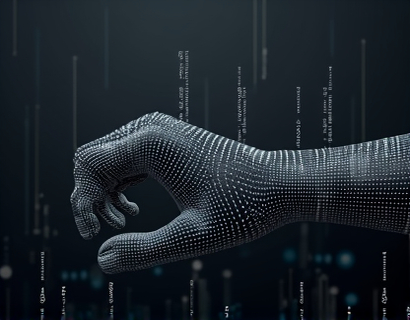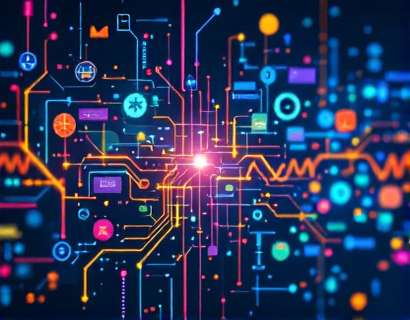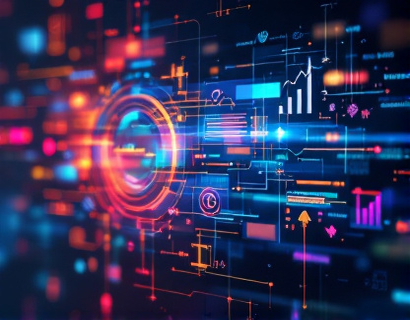Crypto and AI: Transforming App Ecosystems for Enhanced User Experiences with Advanced Digital Solutions
The intersection of cryptocurrency and artificial intelligence (AI) is giving rise to a new era of digital innovation, fundamentally transforming app ecosystems and enhancing user experiences. This synergy is not just about combining two advanced technologies but about creating a synergistic effect that drives unprecedented growth and efficiency in the digital realm. As tech professionals and early adopters, understanding the potential and applications of blockchain and AI is crucial for staying ahead in the rapidly evolving tech landscape.
The integration of cryptocurrency into app ecosystems brings a level of transparency, security, and decentralization that traditional systems often lack. Blockchain technology, the backbone of cryptocurrencies, ensures that transactions are immutable and verifiable, reducing the risk of fraud and increasing trust among users. This trust is paramount in digital environments where security breaches and data manipulation can have severe consequences.
AI, on the other hand, brings intelligence and adaptability to these ecosystems. Machine learning algorithms can analyze vast amounts of data to provide personalized experiences, predict user behavior, and optimize system performance. When combined with the transparency and security of blockchain, AI can operate with a higher degree of autonomy and reliability, leading to more sophisticated and user-friendly applications.
Enhancing Security and Trust
One of the most significant benefits of integrating cryptocurrency and AI in app ecosystems is the enhancement of security and trust. Blockchain's decentralized nature means that no single entity has control over the entire network, making it inherently more secure against centralized attacks. AI can further bolster this security by detecting and mitigating threats in real-time. For instance, AI-powered systems can monitor network activity for unusual patterns that may indicate a security breach, allowing for immediate action to be taken.
Moreover, the use of smart contracts on blockchain platforms ensures that agreements are automatically enforced once predefined conditions are met. This reduces the need for intermediaries and minimizes the risk of contractual disputes. AI can optimize the execution of these smart contracts by analyzing complex scenarios and ensuring that all conditions are met efficiently and accurately.
Personalization and User Experience
Personalization is a key driver of user engagement and satisfaction in digital applications. AI algorithms can process user data to create highly tailored experiences, recommending content, products, or services based on individual preferences and behaviors. When integrated with blockchain, this personalization can be achieved without compromising user privacy. Blockchain ensures that user data is stored securely and that users have control over who accesses their information.
For example, in a decentralized social media platform, AI can curate a feed based on a user's interactions and preferences, while blockchain ensures that the user's data is not misused or sold to third parties. This combination not only enhances the user experience but also builds trust, as users are more likely to engage with platforms that respect their privacy and data ownership.
Optimizing App Performance
AI can significantly improve the performance of applications by optimizing various aspects of their operation. Machine learning models can analyze usage patterns to identify bottlenecks and suggest improvements. For instance, AI can optimize server load balancing, ensuring that resources are allocated efficiently to handle peak traffic without compromising performance. This results in faster load times and a smoother user experience.
Blockchain can complement AI's performance optimization by providing a transparent and tamper-proof record of app performance metrics. This data can be used to train AI models more effectively, creating a feedback loop that continuously improves the app's functionality. Additionally, blockchain can facilitate decentralized computing resources, allowing apps to leverage a distributed network of computing power to enhance processing capabilities.
Decentralized Finance (DeFi) and App Ecosystems
The rise of Decentralized Finance (DeFi) is a prime example of how cryptocurrency and AI are reshaping app ecosystems. DeFi platforms offer financial services such as lending, borrowing, and trading without traditional financial intermediaries. AI can enhance these platforms by providing sophisticated risk assessment tools, fraud detection systems, and automated trading bots. These AI-driven tools can analyze market trends and user behavior to make informed decisions, improving the overall efficiency and reliability of DeFi services.
Moreover, the transparency of blockchain ensures that all transactions are visible and verifiable, reducing the risk of fraud and increasing user confidence. AI can further enhance this by predicting market movements and optimizing investment strategies, providing users with valuable insights and automated solutions.
Supply Chain Management and IoT Integration
Beyond financial applications, the combination of cryptocurrency and AI is revolutionizing supply chain management and the Internet of Things (IoT). Blockchain provides a secure and transparent ledger for tracking goods from production to delivery, ensuring authenticity and reducing counterfeiting. AI can analyze data from IoT devices to optimize logistics, predict maintenance needs, and enhance overall supply chain efficiency.
For instance, in a smart supply chain, AI can monitor real-time data from sensors on products and transportation vehicles, adjusting routes and schedules to minimize delays and costs. Blockchain ensures that all transactions and data exchanges are recorded and verified, creating an immutable record that enhances trust and accountability among all parties involved.
Challenges and Considerations
While the potential of integrating cryptocurrency and AI in app ecosystems is vast, there are several challenges and considerations that need to be addressed. One of the primary concerns is the regulatory landscape. As these technologies evolve, governments and regulatory bodies are still grappling with how to govern them effectively. Compliance with regulations is crucial to avoid legal issues and ensure the sustainable growth of these applications.
Another challenge is the technical complexity involved in integrating blockchain and AI. Developers need to have a deep understanding of both technologies to create seamless and efficient solutions. This requires significant investment in research and development, as well as skilled personnel who can bridge the gap between these domains.
Additionally, there is the issue of scalability. While blockchain and AI offer powerful capabilities, scaling these solutions to handle large volumes of data and transactions remains a challenge. Solutions such as layer 2 protocols for blockchain and more efficient AI algorithms are being developed to address these scalability issues.
Future Prospects
The future of app ecosystems with integrated cryptocurrency and AI is promising. As technology continues to advance, we can expect more innovative applications that leverage the strengths of both blockchain and AI. The convergence of these technologies will likely lead to the development of autonomous systems that can operate with minimal human intervention, further enhancing efficiency and user experience.
Moreover, the growing adoption of 5G and edge computing will provide the necessary infrastructure to support these advanced applications, enabling real-time data processing and low-latency interactions. This will open up new possibilities in areas such as augmented reality, virtual reality, and smart cities, where seamless and secure digital experiences are essential.
In conclusion, the synergy between cryptocurrency and AI is transforming app ecosystems in profound ways, offering enhanced security, personalization, and performance. As tech professionals and early adopters, embracing these technologies and understanding their potential will be key to staying competitive and innovative in the digital age.










































